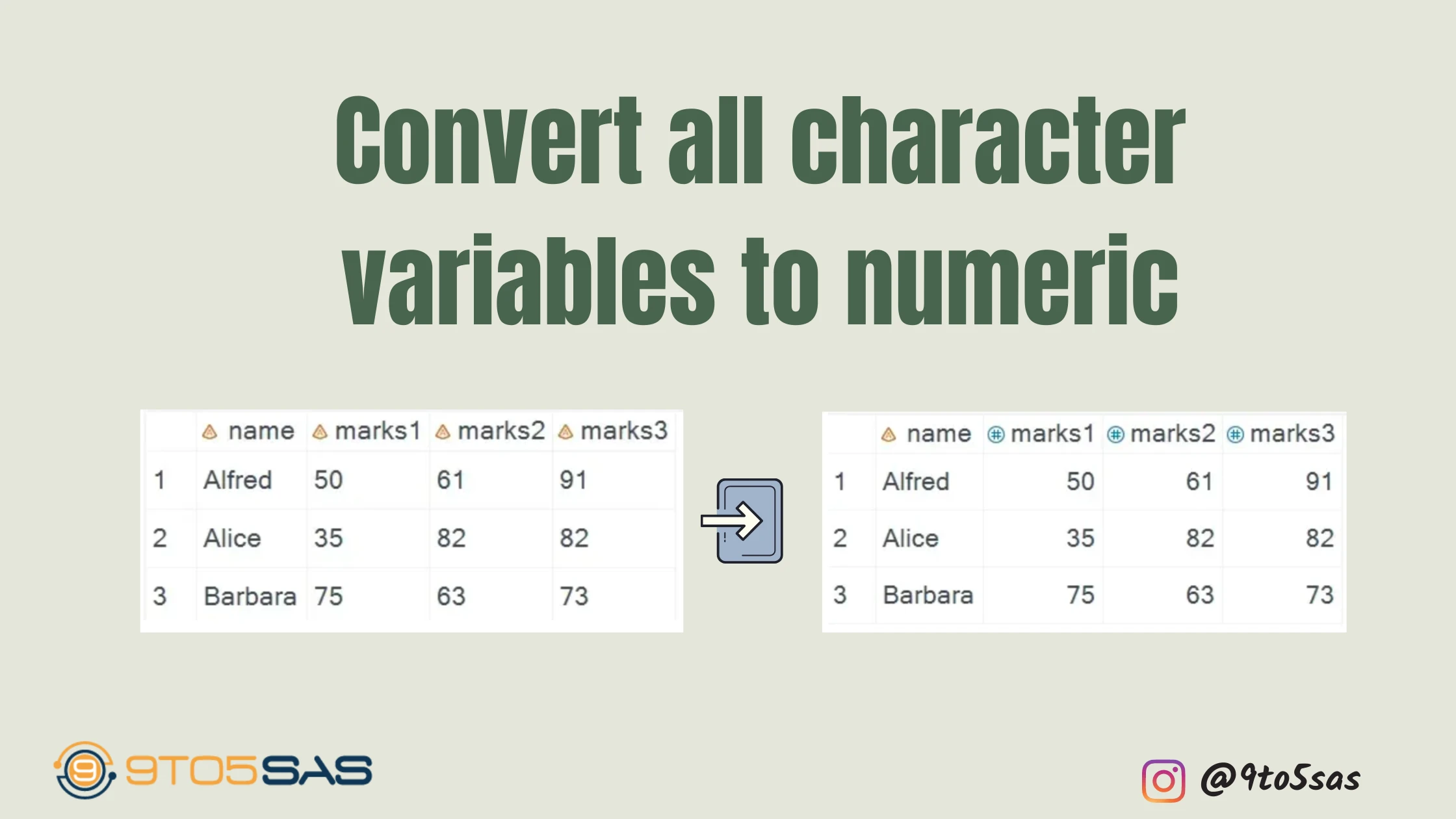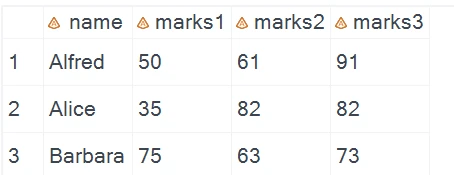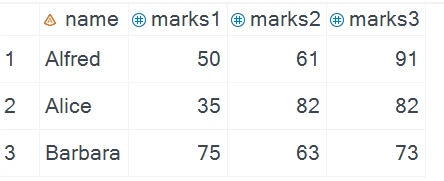Are you looking to convert all character variables to numeric variables?
A character variable can store numbers, but analyses require numeric variables. This example shows how to convert all character variables to numeric.
Sample dataset
data test;
input name $ marks1 $ marks2 $ marks3 $;
datalines;
Alfred 50 61 91
Alice 35 82 82
Barbara 75 63 73
;
run;We will get the count of all character variables in the dataset.
For more information, see our post on 8 Ways to count the number of observations in a SAS dataset and pass it into a macro variable.
proc sql noprint;
select count(name) into :cnt from dictionary.columns where
libname=upcase("WORK") and memname=upcase("CLASS") and type="char";
quit;
%put &cnt.;Output:
4
Then, we will determine the list of variables that have numeric values.
This is done using the INPUT function to read the value of the character variable vars[m] with the numeric informat 3.
The result is a numeric value or, if the value of vars[m] is non-numeric, a missing value is generated, and the flag variable is set to 1. (The ?? after the comma prevents printing an error message in the log and setting the automatic variable _ERROR_ to 1 if the value of vars[m] is non-numeric.)
Read How to check if a string is numeric in SAS?
data _null_;
set class end=lastobs;
array vars [*] _character_;
array flag{&cnt} _temporary_;
do m = 1 TO dim(vars);
flag[m]=ifn ((input(vars[m], ?? 3.) eq .), 0, 1);
END;
if lastobs then
do;
length varlist $ 32767;
do j=1 to &cnt;
if flag{j} then
varlist=catx(' ', varlist, vname(vars{j}));
end;
call symputx('varlist', varlist);
end;
run;
%put &varlist;
%let nvars=%sysfunc(countw(&varlist));
%put &nvars.The SET statement reads observations from the SAS data set Class. The END= option creates a temporary variable named LASTOBS that is initialized to 0. LASTOBS equals 1 when SET reads the last observation in the SAS data set class.
The first array statement creates an array named vars for all the character variables. The second array statement creates a temporary array named flag to store the result of the flag variable.
Output:
marks1 marks2 marks3 3
The next step is used to convert a character variable to a numeric variable, drop and rename macro.
Read: Variable conversions in SAS
data class2;
set class;
array charx{&nvars} &varlist;
array x{&nvars};
do i=1 to &nvars;
x{i}=input(charx{i}, 3.);
end;
do i=1 to &nvars;
drop &varlist i;
%renamer;
end;
run;Rename Macro
%macro renamer;
%do i=1 %to &nvars;
rename x&i=%scan(&varlist, &i);
%end;
%mend renamer;Reference: Convert all character variables to numeric and use the same variable names in the output data set
You can download this entire code from here.



